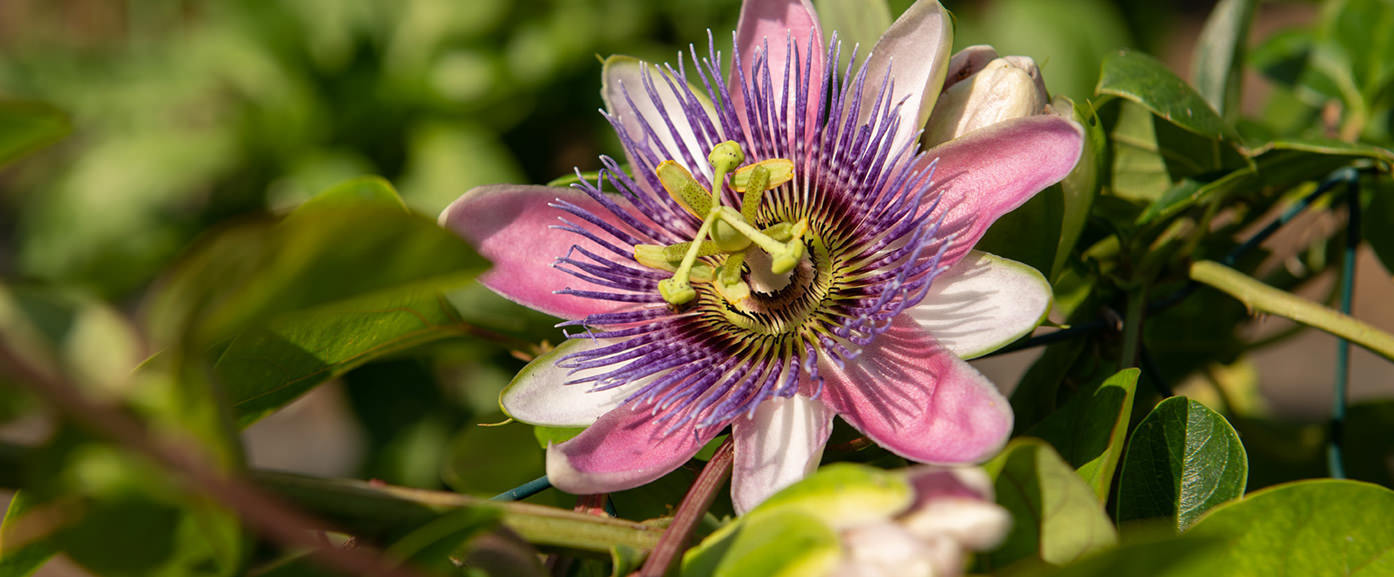
Written by Samantha Stone
Nearly 40 years ago, Cal and Dee Homan received a passion vine (Passiflora) from a generous neighbor who was making the transition into retirement. They cared for the original plant through the decades, carrying it with them in their own move from the Reading area to Garden Spot Village. The plant now lives in Spot 19 in the Community Garden through the summer, breathtaking beauty emerging in various places all throughout its thick, rope-like vines.
Normally, this plant would react negatively to the frost season in Pennsylvania and refuse to bloom until the warm season starts up again; however, Garden Spot’s Aeroponic Greenhouse provides a safe haven for the Homan’s plant from October to May, allowing it to present its stunning flowers year round. Due to the single day, morning-to-night blooming period, the Homan’s fragrant passion flowers regularly appear on staff desks, dining tables, and in residents homes, as Dee believes that it is wasted beauty to allow the plant to blossom unnoticed.
“I don’t know how he does it,” wonders Dee, “but Cal is the only one that has been able to make these plants grow.” Many splits have been distributed to admirers of the plant, in the hopes that the offshoots result in successful plants; so far, however, the only flourishing passion plants at Garden Spot Village are cared for by the Homans. The secrets of their success are yet to be discovered, but the Homans continue to distribute the blossoms with open generosity, striving to scatter beauty all throughout the campus.
About the Flower: Passiflora has been a symbol of the Passion of the Christ for centuries, named by early Spanish and Italian missionaries as they explored the New World. The corona (Spanish for “crown”) filaments, which grow in a ring above the delicate petals, represent the crown of thorns that Jesus wore, and the three stigmas signify the three nails that held Him to the cross. The ten petals are meant to illustrate the ten apostles that remained faithful to him during His crucifixion, and the receptacle, or the central column of the flower, depicts the cross itself. Some passion vines even bear Maypop, a globular fruit, which is attributed to the Earth that God saved.